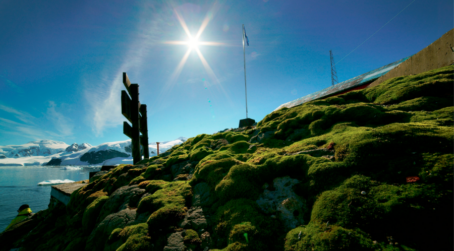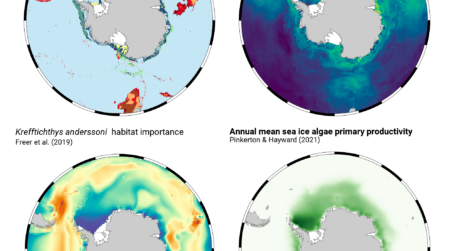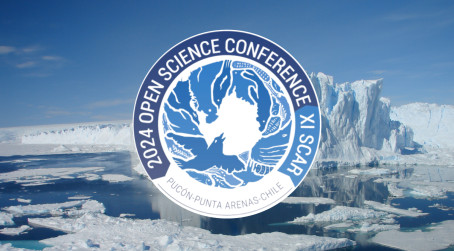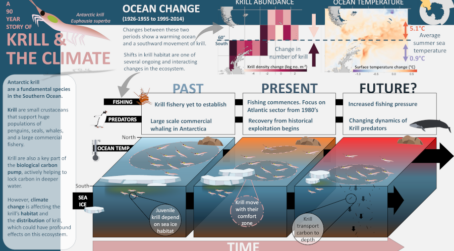The Expert Group on Antarctic Biodiversity Informatics aims to foster the application and development of biodiversity informatics (computationally-driven biodiversity science and information processing) in the SCAR community. It does this by coordinating and participating in a range of projects across the SCAR biodiversity science portfolio.

EG-ABI (biodiversity informatics)
About
EG-ABI was created during the SCAR Life Sciences Standing Scientific Group meeting at the SCAR Open Science Conference in Portland Oregon, in July 2012. Its purpose is to foster the application and development of biodiversity informatics in the SCAR community, and it does this by coordinating and participating in a range of projects across the SCAR biodiversity science portfolio.
EG-ABI supports the Antarctic and Southern Ocean biodiversity science community to come together, share resources and expertise, and ask questions on topics of data access, integration, analysis, and synthesis.
EG-ABI is primarily focused on computational aspects of biodiversity science, with particular value placed on transparent, reproducible science using open software and data. We promote and contribute to the development of software tools, analytical and collaborative platforms, and resources such as user guides, example workflows, tutorials, and other educational material to support end users (scientists, policy makers, and others) in biodiversity data access, integration, analysis, and synthesis.
EG-ABI does this by:
- encouraging collaboration and disseminating information regarding biodiversity informatics activities across the SCAR and broader Antarctic science communities,
- hosting workshops, online discussion fora, and other channels for community engagement and capacity building,
- working with other groups in SCAR and elsewhere to develop integrated or synthesized data products of value to the community,
- providing advice to SCAR groups that are engaging in these areas,
- engaging in biodiversity science projects.
There is clearly a close relationship between these activities and other areas of science, and so the EGABI group collaborates closely with a range of other groups and initiatives, including:
- the SCAR Standing Committee on Antarctic Data Management
- the Southern Ocean Observing System
- SCAR research programmes and groups including Ant-ICON and EG-BAMM
- the Antarctic Environments Portal
- the SCAR Antarctic Biodiversity Portal, biodiversity.aq
It is important to note that EG-ABI is not primarily about:
- data publication or data management, which are the focus of other SCAR groups including SCADM, biodiversity.aq, and SCAGI. EG-ABI’s primary interest is in accessing and using such data, and improving community tools for doing so. However, as noted above, EG-ABI will collaborate in generating data synthesis products, particularly where these aid in downstream data usage by the community.
- domain-specific science under our own auspices. EG-ABI does not instigate its own biological science projects, for example, but we will partner with domain-specific groups on the computational aspects of such projects
News
News and updates from the EG-ABI community

Ant-ICON|EG-ABI|
Workshop: Developing a Framework for Essential Biodiversity Variables (EBVs) in Terrestrial Antarctic and Sub-Antarctic Ecosystems
…

EG-ABI|
New SCAR Ecological Model Output Repository
…

AGATA|Ant-ICON|AntClimNow|EDI|EG-ABI|EG-GEOCON|INSTANT|Research Programmes|RINGS|SC-HASS|
Travel Grants for SCAR Open Science Conference 2024
…

EG-ABI|
Winner of the SCAR EG-ABI data visualisation competition
…
Members
Contact
The Chief Officer of EG-ABI is Ben Raymond and the Deputy Chief Officer is Anton van de Putte.
Membership
EG-ABI is an inclusive group and membership is open to anyone. Members are welcome to engage with EG-ABI to whatever degree suits them, from actively collaborating in EG-ABI projects, participating in selected workshops and other events, or simply observing communication on the mailing list or other information channels.
EG-ABI is led by a core group of around 10 members, with numbers varying depending on current activities. Members of the core leadership group take an active role in the community, for example by leading one or more EG-ABI activities or acting as liaison with other groups.
Core members:
- Ben Raymond (Australian Antarctic Division, Australia) – Chief Officer
- Anton Van de Putte (Royal Belgian Institute of Natural Sciences; Université libre de Bruxelles, Belgium) – Deputy Chief Officer and SCADM liaison
- Claudia Andrade Díaz (University of Magallanes, Chile)
- Huw Griffiths (British Antarctic Survey, UK)
- Svenja Halfter (National Institute of Water and Atmospheric Research, New Zealand) – Communications officer
- Kerstin Jerosch (Alfred Wegener Institute, Germany)
- Lucas Krüger (Instituto Antártico Chileno, Chile)
- Ryan Reisinger (University of Southampton, UK) – EGBAMM liaison
- Zephyr Sylvester (University of Colorado Boulder, USA) – Secretary
- Bree Woods (Institute for Marine and Antarctic Studies, Australia) – EGABI representative on the Ant-ICON Advisory Committee
Resources
Publications, Data and Links of interest to the Antarctic Biodiversity Informatics community
